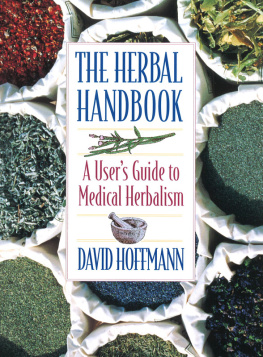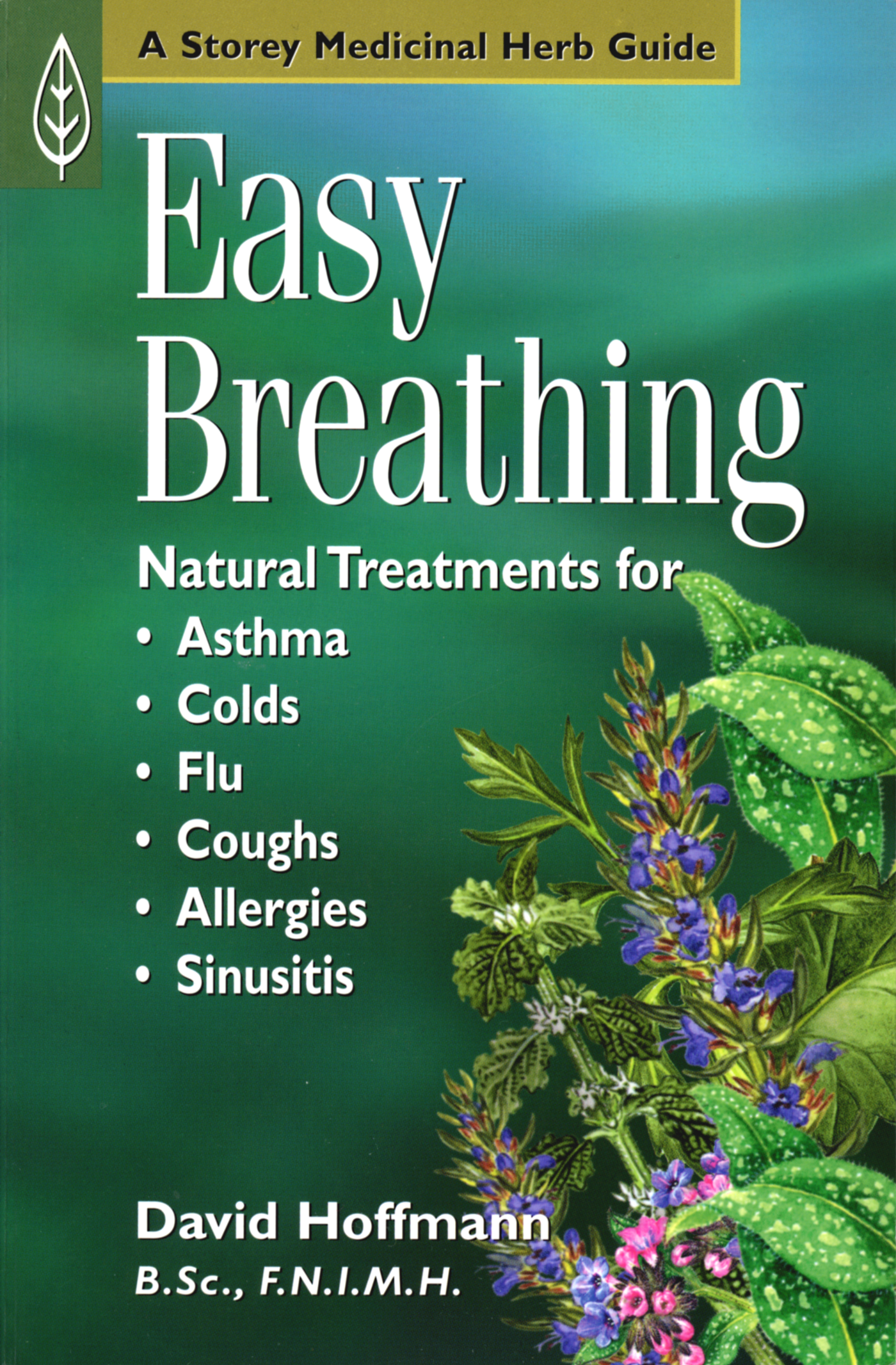Contents
Chapter 1
How We Breathe
A remarkable thing happens when we breathe. Each breath that we take has been shared with all other human beings in fact, with all other life on our planet. With respiration, we truly become one with nature. Trees and other growing things take in the carbon dioxide we exhale and replace it with life-giving oxygen. Through the circulation of gases in the atmosphere, the reality of the planetary whole reveals itself, with profound implications for all human life. This comprehensive vision underlies holistic healing as much as it does ecology. The anatomy and physiology of the respiratory system is a complex, beautiful embodiment of integration and wholeness.
Every minute, we breathe in and out 10 to 15 times. That adds up to nearly 25,000 breaths a day. Through breathing, the body extracts the oxygen it needs from the air and discharges carbon dioxide from the blood. The nearly 10,000 liters of air that we inhale daily consists mostly of oxygen and nitrogen. It also contains small amounts of other gases as well as floating bacteria, viruses, tobacco smoke, car exhaust, and other pollutants in the atmosphere.
Only one fifth of the air we breathe is oxygen, but this is the part that our bodies need for survival. Every cell in the body uses oxygen to extract the energy thats locked away in food. Its impossible to exaggerate the importance of oxygen. Many cells can survive briefly without it, but others need a constant supply. Brain cells die if they lack oxygen for more than a few minutes and brain cells cannot be replaced.
The respiratory and circulatory systems supply the cells of the body with oxygen. This process is controlled by a part of the brain called the medulla oblongata, which regulates the breathing rhythm by integrating messages about blood composition with other signals.
The Workings of the Respiratory System
The lungs stretch from the trachea (also called the windpipe) to below the heart. They are safely encased within the thoracic cage and resemble a fine-grained sponge in texture. About 10 percent of the lungs is sold tissue; the rest is filled with air and blood. Because of this unique structure, the lungs can facilitate gas exchange taking oxygen from the air and removing carbon dioxide from the blood yet are strong enough to maintain their proper shape.
When we breathe, air is taken in through the nose and mouth and passes down the throat into the trachea. The air enters the lungs, where it travels into subdivisions called bronchi. The two main bronchi extend from the trachea into each lung. There, they divide into smaller bronchi, which divide again into many smaller bronchioles. The bronchioles divide into a network of about 3 million alveolar ducts. These ducts contain alveoli, which are commonly known as air sacs.
The Respiratory System
The Breathing Process
The movement of air into the lungs is controlled by the respiratory muscles of the thorax. These muscles, collectively called the ventilator apparatus, include the diaphragm (the muscle that separates the chest and abdominal cavities) and the muscles that move the ribs. When the respiratory muscles contract, the chest enlarges like a bellows sucking in air. This is called inhalation. As the lungs fill with air, they expand automatically. They return to their resting size when we exhale.
The performance of the ventilator apparatus is coordinated by specific nerve sites, called respiratory centers, that are located in the brain and neck. The respiratory centers respond to changes in blood levels of oxygen, carbon dioxide, and acid. Normal concentrations of these chemicals are maintained in arterial blood by changes in the breathing rate.
The outside of the lungs and the inside of the chest cavity are lined by membranes called the pleurae. The pleura surrounding the lungs is called the visceral pleura, and the pleura lining the chest cavity is called the parietal pleura. The space between the lungs and the inside of the chest cavity is called the pleural space or the pleural cavity. The pleural space is moistened with a fluid that lubricates the pleurae as they slide back and forth during ventilation. Normally, the pleural space contains only a small amount of fluid and is free of gas, blood, and other matter.
Gas exchange between our blood and the air we inhale takes place in the alveoli. The membrane that separates blood from air in the alveoli is very thin. In fact, its about 50 times thinner than a sheet of tissue paper and has a surface area as large as a tennis court. Oxygen and nitrogen can pass easily through this membrane into the blood.
It takes just about a minute for the total blood volume of the body to pass through the lungs and only a fraction of a second for each red blood cell to pass through the capillary network. Gas exchange occurs almost instantaneously during this short period. The blood carries fresh oxygen throughout the body. When it returns to the alveoli, it deposits carbon dioxide and other gases, which leave the body in exhaled air.
The incredibly complex system that permits this continuous ebb and flow is what gives the body its life energy. Any physical problem that inhibits gas exchange will reduce the bodys overall vitality and increase the risk for a variety of metabolic disorders.
The Holistic Perspective on Disease Prevention
Breathing problems do more than temporarily affect other organs and systems in the body. They can also cause chronic diseases. The reverse is true, too: For example, problems with the circulatory system can lead to lung problems. The condition of the digestive system is also important, since the lungs, bowels, kidneys, and skin share the task of removing wastes. If a problem develops in any of these organs, the body compensates by increasing the load on the others. The lungs can handle only a limited amount of wastes. So if, for example, the bowels arent working properly and the lungs take on some of the burden, the lungs can also develop problems.
Many pathological changes in tissues can be prevented if the environment around the bodys cells is always rich in oxygen. Two of the best measures for maintaining good health are getting regular exercise and promoting proper breathing. Balance and harmony, along with appropriate herbal treatments when necessary, are the keys to successful preventive medicine. We need a clear and free flow of energy through all aspects of our lives physical, emotional, and spiritual. Proper breathing is just part of the equation.
A Whole-Body Approach to Breathing
Its impossible to separate the health and action of the lungs from the rest of our lives. People with healthy lifestyles are much more likely to have healthy lungs. Here are some of the most important factors in lung health:
Diet. The foods we eat must ensure health and wholeness. The approaches people take to their diets depend on their specific health needs and personal preferences, which are always very important.
Body structure. To maintain the bodys integrity, we must address structural factors, such as any misalignment of the vertebrae. This may require the expertise of skilled practitioners. Exercise, of course, is critical to maintaining structural integrity.








![Neil Schachter - The Good Doctors Guide to Colds and Flu [Updated Edition]: How to Prevent and Treat Colds, Flu, Sinusitis, Bronchitis, Strep Throat, and Pneumonia at Any Age](/uploads/posts/book/256863/thumbs/neil-schachter-the-good-doctor-s-guide-to-colds.jpg)





